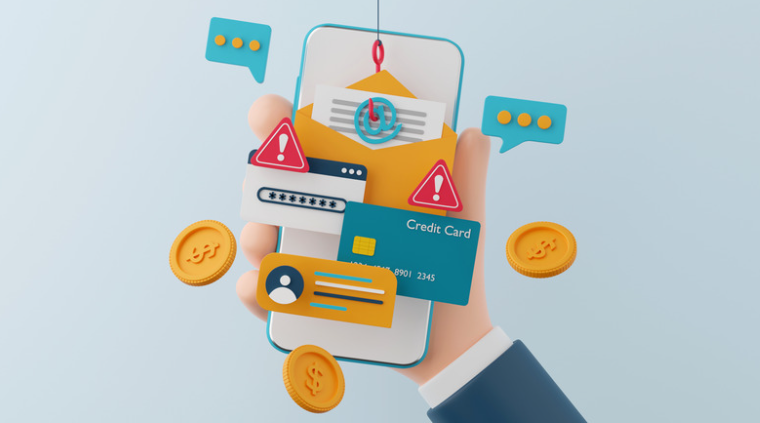
What Could Go Wrong If You Visit an Unsecured Website?
Website security is all about protecting websites and visitors from unauthorized access, data theft, malware infections, and other cyberattacks. It’s unfortunate that not all websites have the same level of security, and some can be dangerous for unsuspecting users. Approximately 12.8 million websites are infected with malware worldwide.
On top of that, websites face an average of 94 daily attacks. This article will discuss the risks of visiting unsecured websites and how they can jeopardize your data and identity. We’ll also provide some tips on protecting yourself and minimizing these risks when you’re online.
Practical Tips for Enhancing Online Security

To enhance your online security and protect your privacy against the risks of unsecured websites, follow these recommendations:
- Use a trustworthy password manager for crafting and safeguarding unique passwords per account.
- Keep your software and browsers up to date to avoid vulnerabilities.
- Verify website security with the “HTTPS” protocol and padlock icon.
- Be cautious of suspicious links and downloads to prevent malware or phishing attempts.
- Regularly monitor financial accounts and credit reports for signs of unauthorized activity.
In today’s digital landscape, it is crucial to understand the risks of visiting unsecured websites. We can protect ourselves and minimize vulnerability to these dangers by implementing recommended security measures. Safeguarding our online security requires proactive efforts, staying informed about emerging threats, and adapting security measures.
Top 3 Prominent Cybersecurity Risks
Recognizing the threats and risks makes it much easier to take the necessary precautions. To protect yourself from the dangers of the online world, you must first know what’s awaiting you. Here are the top prominent cybersecurity threats:
Data Breaches

Data breaches entail the unauthorized access or disclosure of confidential information, endangering its security, privacy, and integrity. Unprotected websites lacking encryption, authentication, or safeguarding measures, as well as human blunders like misconfigurations, weak passwords, or phishing, can pave the way for these breaches.
The repercussions are grave and enduring, exposing personal data, financial particulars, login credentials, medical records, trade secrets, intellectual property, and beyond. In 2022, the average global expense incurred per breach reached a staggering US$ 4.35 million, an upswing from the previous year’s 4.24 million.
Furthermore, identifying and controlling a breach took an average of 287 days, permitting assailants almost a year of unhindered access. Trust erosion, damaged reputations, legal liabilities, regulatory fines, and customer abandonment are other problems victims face.
Malware Infections
Malware invades privacy and gains unauthorized access to computer systems and networks. It sneaks into devices through unguarded websites that host harmful links, downloads, ads, scripts, or disguised phishing emails. Unwitting users fall into its trap, opening dangerous attachments or clicking on deceptive links.
Malware comes in various forms, from viruses to ransomware, spyware to adware, and even stealthy rootkits. Its harmful effects can include files disappearing or being held hostage through encryption. It can also lead to the exposure of sensitive data, surveillance of users’ activities, intrusive and unwanted ads, redirecting web traffic to untrustworthy sources, and installing hidden backdoors for future attacks.
Over 270,000 new and previously unseen malware variants emerged in just the first half of 2022. Furthermore, every minute witnesses the unfortunate downfall of four companies caught in ransomware attacks. This type of malware acts like a vicious kidnapper, locking data away and demanding a ransom for its release.
Dealing with the aftermath of a malware infection is an arduous and costly process, requiring significant time and resources to recover. It is estimated that businesses face an average cost of $2.6 million to mitigate the impact of a malware attack. Numerous dangerous malware strains lie dormant within unsecured websites, waiting for unsuspecting victims. Here are a few well-known examples:
- Emotet: This Trojan cunningly steals sensitive information and spreads it to other devices through spam emails.
- WannaCry: A ransomware that encrypts files and demands payment in Bitcoin to regain access.
- TrickBot: A Trojan that stealthily steals banking credentials while introducing additional malicious software.
- Mirai: A menacing botnet that infects Internet of Things (IoT) devices and employs them to launch disruptive DDoS attacks.
Identity Theft

Identity theft is a dangerous threat that thrives online, affecting individuals and organizations. It involves deceitfully using someone else’s personal information, like their name, birth date, Social Security number, or financial data, for illegal financial gain or other malicious purposes.
Weak website security makes it easy for user data to be exposed while phishing emails and deceptive calls trick unsuspecting victims into revealing their private and financial details. The consequences of identity theft are diverse and increasingly harmful. They can include taking over someone’s accounts, conducting fraudulent transactions, damaging reputations, ruining credit scores, committing tax refund fraud, and even stealing medical identities.
As our dependence on digital technologies grows, the cost to victims continues to rise, with a median loss of around $500. Reclaiming a stolen identity is exhausting and financially burdensome, consuming countless hours of hard work.
On average, victims spend about 30 hours trying to unravel the deceitful mess. Breaking free from identity theft can be long and arduous, taking up to 18 months of determined personal effort.
Author Profile

- Blogger by Passion | Contributor to many Business and Marketing Blogs in the United Kingdom | Fascinated with SEO and digital marketing and latest tech innovations |
Latest entries
 TechnologyJune 7, 2024Advantages of Cross-Platform Mobile Development with React Native
TechnologyJune 7, 2024Advantages of Cross-Platform Mobile Development with React Native TechnologyMay 31, 2024Custom Software Solutions for Industry-Specific Challenges
TechnologyMay 31, 2024Custom Software Solutions for Industry-Specific Challenges Online CoursesMay 30, 2024Is a Communications Diploma Worth It?
Online CoursesMay 30, 2024Is a Communications Diploma Worth It?  Digital MarketingMay 30, 2024Exploring Digital Marketing Innovations: Affiliate Insights
Digital MarketingMay 30, 2024Exploring Digital Marketing Innovations: Affiliate Insights

